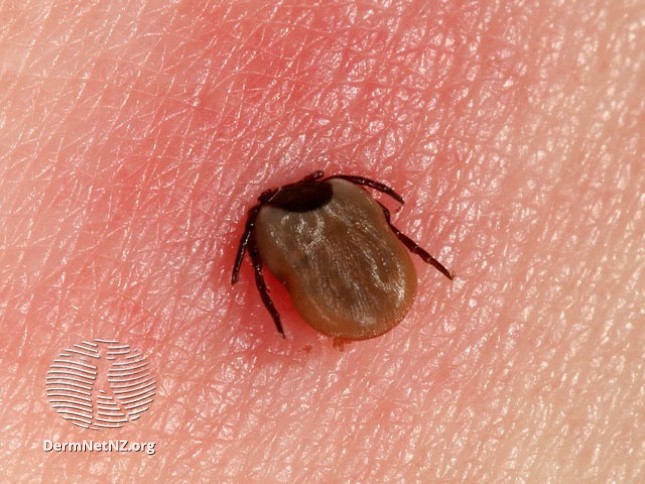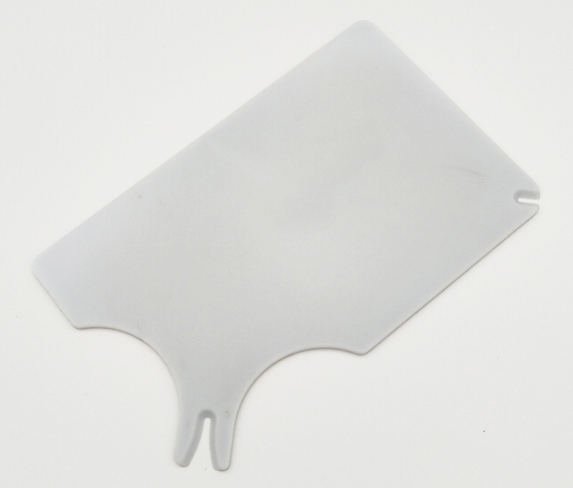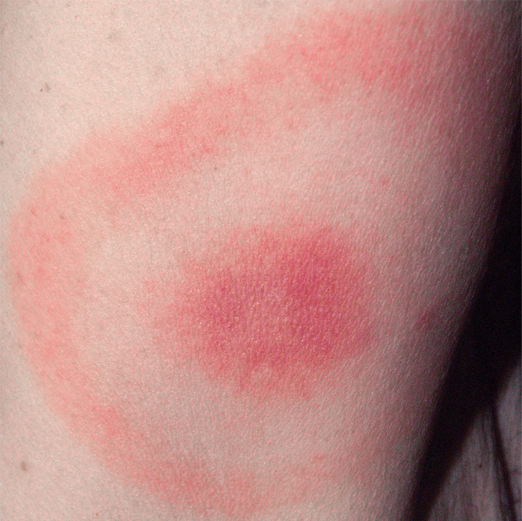If you are bitten by a tick:
- Take a photograph of the tick for identification.
- Carefully and quickly remove it – there is no minimum attachment time but longer attachment increases the risk of infection.
- Use a specialist removal tool
Use a plastic tick removal card or tick twister and follow the instructions on the packet OR use specialist fine-pointed tick removal tweezers held parallel to the skin to lift the tick off. - Do not squeeze the body of the tick when removing it.
- Do not cover the tick with substances such as gels, oils or liquids and do not burn it – these can increase the risk of infection.
- Clean the area with antiseptic or soap and water.
- Kill the removed tick by dropping it into alcohol – do not squeeze or burn it. Keep it in a bag in the freezer for future testing.

© Professor Raimo Suhonen
Source: DermNet New Zealand
Using a Tick Removal Card
To remove a tick using a tick-removal card:
- Choose which card notch to use – use the smaller notch for smaller ticks
- Slip the card notch under the tick
- Slowly push the card forwards and upwards with gentle and even pressure. Allow the tick to let go and lift away from the skin with ease. Do not apply excessive force as this may cause the head to remain in the skin.
- Disinfect the bite area and the card after removal using hygienic cleansing wipes.

Watch a Scottish GP demonstrate how to use a tick card:
Using a Tick-Twister Tool
Watch Out for Symptoms
- Early signs and symptoms typically occur 3-30 days after the bite and may include: expanding rash; flu-like symptoms; fatigue; headache; and muscle and joint pain.
- The bite is painless and does not normally itch.
- An expanding rash is diagnostic of Lyme disease – take a photo of it and get prompt treatment.
- There are many variations of rash – as demonstrated by NICE, US CDC, and DermNetNZ.
- Not everyone gets a rash.
- Testing is not reliable – a negative test does not rule out Lyme disease.
- Early and adequate treatment increases the chance of full recovery. Severe symptoms can develop later if Lyme disease is not treated promptly and correctly.
- Around 10-20% of those treated still go on to develop chronic symptoms.
- Lyme Resource Centre has information for health professionals.

More Information
Useful information is available on a variety of NHS Scotland and charity web sites.